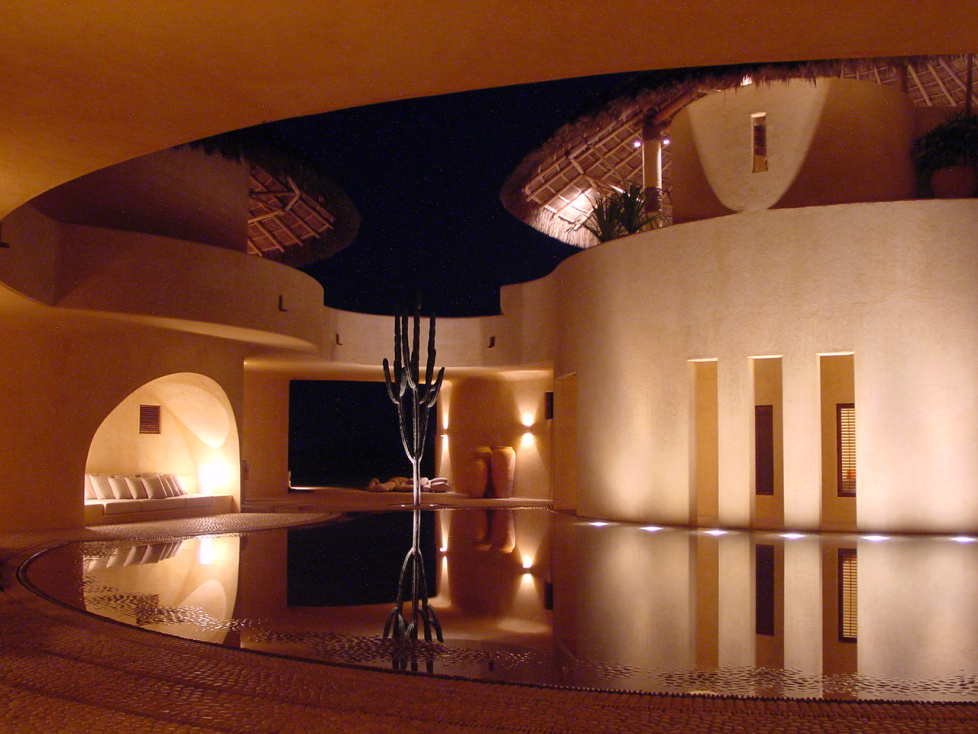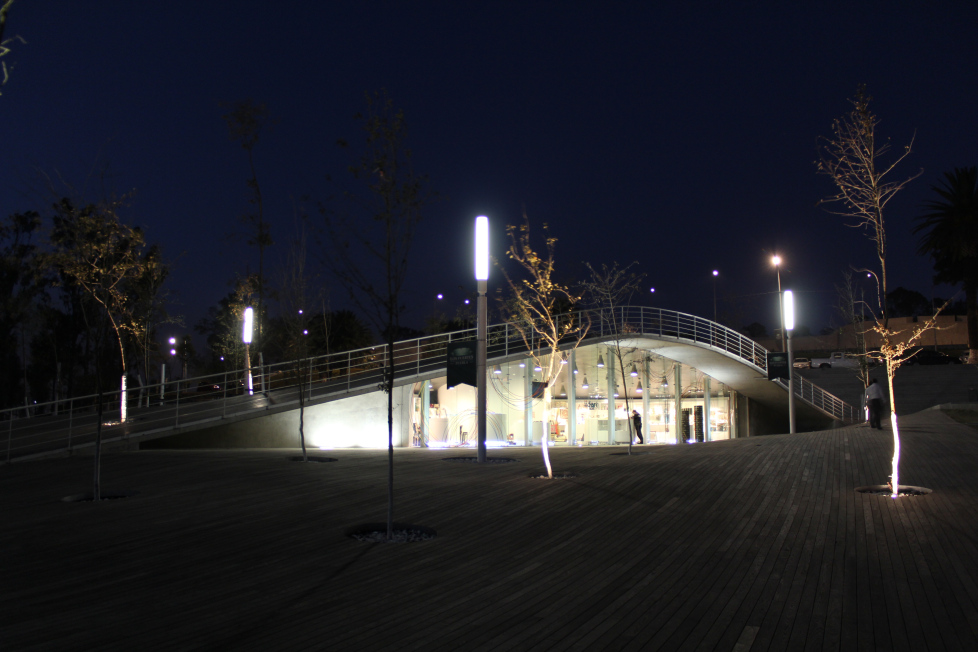Light is the most important factor in the appreciation and understanding of Architecture. The relationship between light and architecture is grounded in the principles of physics; it is about energy and matter but in this particular case it also implies an emotional effect on people.
 |
|
(Photo credits: Victor Palacio) |
The quality of lighting in a space defines its character and creates impressions. The human eye perceives its form through the incidence and reflection of light and in that way acquires information about the ambiance in a given place. Visual impressions are interpreted in our brains and put in context to create emotions that move us to take particular actions.
Lighting in a living room will be warm and dimmed, there will be no brilliant points and instead the distribution of light reveals textures, color and balances the dark and clear areas. This atmosphere, when read by our visual system, creates a comfortable impression that helps us to relax and enjoy the moment.
In opposition, lighting in a working place, for example a laboratory, will be cool in appearance, brilliant and focused on the specific places of work. All the room will be evenly lit, it will be perceived as wide and clean; this impression creates a dynamic mood in which different tasks are developed with more energy – mental and physical.
 |
|
(Photo credits: Victor Palacio) |
In public spaces, light provides a safe environment where people can meet and have a great diversity of activities. Historic districts, squares, parks, pedestrian streets are all appreciated and become useful thanks to good lighting.
 |
|
(Photo credits: Victor Palacio) |
How can we add value to our homes, institutions, public spaces, commercial areas, cultural facilities, working spaces and practically all spaces by the use of light?
It is important to first understand the visual needs of the users of a space. Lighting is ultimately the energy that let us develop visual tasks like reading, identifying colors, perceiving volumes, measuring distances and more!
Secondly, it is really relevant to analyze the space: its form and function. As it was said before, lighting will be different depending on the use given to a place. Surface finishes, materials, shape, color, form, physical dimensions are key elements in the way that light will react and then provide information and impressions.
About Victor Palacio
Víctor Palacio is the founder of ideas en luz independent lighting design practice in Mexico City. Victor’s personal philosophy of design consists in creating unique lighting atmospheres to transform spaces in the benefit of people. His work of 19 years in lighting design includes a broad range of projects in the cultural field, museums, residences, corporate, urban and retail projects. In the professional field, Victor has volunteered for the Illuminating Engineering Society – IES and currently is the President Elect of the International Association of Lighting Designers (IALD). He is a frequent lecturer at lighting courses and international Architectural Lighting events.














